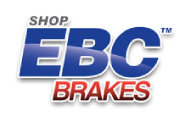Do Ceramic brake pads really work and what do they do exactly ?
That’s a question a lot of people have and the answer is in fact its just a buzz word for an organic brake pad made with less metallic fibers and perhaps man made fibers such as Dupont Kevlar or Twaron. A very good pad that contains some Ceramic particles is the EBC Redstuff which as a low metallic also has the benefit of low dust.
However Ceramic brake pads are generally a term for a group of pads known as NAO or non asbestos organic pads and EBC Brakes was of course the pioneer of this technology back from its early roots 70 years ago when it was part of the BBA group and manufactured products known as Top Dog in the UK.
The organic pads made by reputable suppliers may contain small amounts of Ceramic particles (not fibers) in a granular form but this does nothing more as an additive than the other naturally mined ores that are common in brake pads such as vermiculite or barites crystals that help build a decent brake pad.
Aramid fibers such as Kevlar and Twaron came about when the world changed away from asbestos. The fork in the road gave rise to two distinct choices, organic pads or semi metallic pads. Of course the price minded people went down the semi metallic fork as the steel fibers used cost 10 times less than Kevlar although Kevlar fibers which are 64 times as strong as steel when used in a matrix form and can be used down to as low as 4% content by volume allow a huge number of new interesting ingredients to be blended into brakes.











